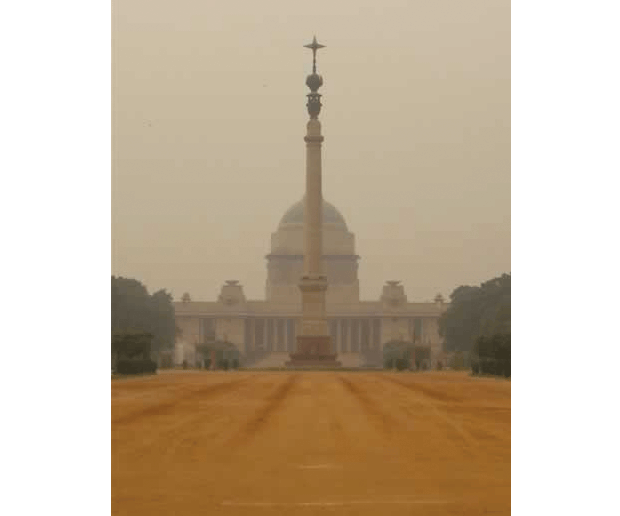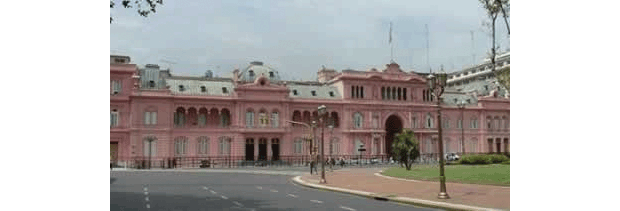|
The president house as it name is the place where
president rule over from. In the past, the president houses were used by
the prince. The article brings the history of different president houses
around the world which are also known for their architecture.
|
|
Kremlin (Russia)
The Moscow Kremlin is a historic fortified complex at the very heart of
Moscow, overlooking the Moskva River (to the south), Saint Basil's
Cathedral (often mistaken by westerners as the Kremlin) and Red Square
(to the east) and the Alexander Garden (to the west). It is the best
known of kremlins (Russian citadels) and includes four palaces, four
cathedrals, and the enclosing Kremlin Wall with Kremlin towers. The
first recorded stone structures in the Kremlin were built at the behest
of Ivan Kalita in the late 1320s and early 1330s, after Peter,
Metropolitan of Rus had moved his seat from Kiev to Moscow. By 1475, the
principalities of medieval Russia were united under Grand Prince Ivan
III, who assumed the title of the Grand Prince of All Rus, envisioning
Moscow as the only legitimate successor to Rome and Constantinople. In
order to illustrate his imperial ambitions, Ivan organised the
reconstruction of the Kremlin, inviting a number of skilled architects
from Renaissance Italy, like Pietro Antonio Solari and Marco Ruffo.
During Napoleon's invasion of Russia in 1812, the French forces occupied
the Kremlin from 2 September to 11 October. When Napoleon fled Moscow,
he ordered the whole Kremlin to be blown up. The Kremlin Arsenal,
several portions of the Kremlin Wall and several wall towers were
destroyed by explosions and fires damaged the Faceted Chamber and
churches. Explosions continued for three days, from 21 to 23 October.
Fortunately, the rain damaged the fuses, and the damage was less severe
than intended. After that, it took the Soviets to take the government
from Petrograd to Moscow again on 1918.
|
|
 |
|
Palac Prezydencki (Poland)
The Palac Prezydencki in Warsaw, Poland, is the elegant classicist
latest version of a building that has stood on the Krakowskie
Przedmiescie site since 1643. Over the years, it has been rebuilt and
remodeled many times. For its first 175 years, the palace was the
private property of several aristocratic families. In 1791 it hosted the
authors and advocates of Poland's May 3rd Constitution, Europe's first
modern codified national constitution, and the world's second after the
U.S. Constitution.
It was in 1818 that the palace began its ongoing career as a
governmental structure, when it became the seat of the Viceroy of the
Polish (Congress) Kingdom under Russian occupation. Following Poland's
resurrection after World War I, in 1918, the building was taken over by
the newly reconstituted Polish authorities and became the seat of the
Council of Ministers. During World War II, it served the country's
German occupiers as a Deutsches Haus and survived intact the 1944 Warsaw
Uprising. After the war, it resumed its function as seat of the Polish
Council of Ministers. In July 1994 it replaced the much smaller and more
difficult to protect. Belweder palace as the official residence of the
Polish President.
|
|

|
|
Palácio do Planalto (Brazil)
The Palácio do Planalto (English: "Palace of the Plateau") is the
official workplace of the President of Brazil. It is located at the
Praça dos Três Poderes in Brasília, Brazil. As the seat of government,
the term "o Planalto" is often used as a metonym for the executive
branch of the government.
The architect of the Palácio do Planalto was Oscar Niemeyer, the
"creator" of most of the important buildings in the new capital of
Brasília. The idea was to project an image of simplicity and modernity
using fine lines and waves to compose the columns and exterior
structures. The Palace is four stories high, and has an area of 36,000
m². Four other adjacent buildings are also part of the complex.
|
|
 |
|
Presidential Palace (Vietnam)
The Presidential Palace of Vietnam, located in the city of Hanoi, was
built between 1900 and 1906 to house the French Governor-General of
Indochina. It was constructed by Auguste Henri Vildieu, the official
French architect for Vietnam. Like most French colonial architecture,
the palace is pointedly European- the only visual cues that it is
located in Vietnam at all are mango trees growing on the grounds.
When Vietnam achieved independence in 1954, Ho Chi Minh refused to live
in the grand structure for symbolic reasons, although he still received
state guests there, and he eventually built a traditional Vietnamese
stilt house and carp pond on the grounds. Today, Ho Chi Minh's Mausoleum
stands nearby and the Presidential Palace remains part of Hanoi's
cultural core. The palace hosts government meetings.
|
|

|
|
Palazzo del Quirinale (Italy)
The palace, located on the Via del Quirinale and facing onto the Piazza
del Quirinale, was built in 1573 by Pope Gregory XIII as a papal summer
residence. It was also used as the location for many papal conclaves. It
served as a papal residence and housed the central offices responsible
for the civil government of the Papal States until 1870. In September,
1870, what was left of the Papal States was overthrown. About five
months later, in 1871, Rome became the capital of the new Kingdom of
Italy. The palace was occupied during the invasion of Rome and became
the official royal residence of the Kings of Italy, though in reality
some monarchs, notably King Victor Emmanuel III (reigned 1900-1946)
actually lived in a private residence elsewhere, the Quirinale being
used simply as an office and for state functions. The monarchy was
abolished in 1946 and the Palace became theofficial residence and
workplace for the Presidents of the Italian Republic.
|
|
 |
|
Grassalkovich Palace (Slovakia)
The Grassalkovich Palace is a palace in Bratislava and the seat of the
President of Slovakia. It is situated next to the Summer Archbishop's
Palace. The building is a Rococo/late Baroque summer palace with a
French garden. It was built in 1760 for Count Antal Grassalkovich, a
Hungarian noble of Croatian origin serving as the head of the Hungarian
Chamber (a sort of ministry of economy and finance for the Kingdom of
Hungary), by architect Anton Mayerhofer. It features many beautiful
rooms and an impressive staircase.
|
|

|
|
Rashtrapati Bhavan (India)
Rashtrapati Bhavan is the official residence of the President of India,
located in New Delhi. Until 1950 it was known as "Viceroy's House" and
served as the residence of the Governor-General of India.
During the Delhi Durbar year of 1911, it was decided that the capital of
India would be shifted from Calcutta to Delhi. This was announced on
December 12 by King George V. As the plan for New Delhi took shape, the
Governor-General's residence was given an enormous scale and prominent
position. The British architect Edwin Landseer Lutyens, a key member of
the city-planning process, was also given the prime architectural
opportunity of designing the building. The Viceroy declared that the
palace was to be classical, but with an Indian motif.
|
|

|
Schloss Bellevue (Germany)
Schloss Bellevue is a château in the centre of Berlin. It is situated on
the north edge of the Tiergarten park, beside the Spree, near the Berlin
Victory Column, with the address "Spreeweg 1". It has been the principal
residence of the German President since 1994. Its name derives from its
beautiful view over the Spree. It was built in 1786 for Prince Ferdinand
of Prussia, the younger brother of King Frederick II of Prussia, and was
designed by architect Philipp Daniel Boumann as a summer residence, on
the site of a house built in 1743 by Knobelsdorff. It was the first
Neoclassical building in Germany, and has three main elements: a central
building of 19 bays, with a central pediment supported by Corinthian
columns, with wings on either side (the "ladies' wing" and the "Spree
wing"). It is surrounded by a park covering 20 hectares.
It served as the official residence of the Crown Prince of Germany until
1918. The treaty ending the Franco-Prussian War was signed here on 3
September 1870. In the mid-1930s, it was used as a museum of
ethnography, before being renovated as a guest house for the Third
Reich. It was damaged in May 1945, at the end of the Second World War,
and refurbished substantially in the 1950s. From 1957, it was a
secondary residence ofthe President of Germany, a pied a terre in Berlin
in addition to his primary residence at the Villa Hammerschmidt in Bonn.
It was refurbished again in 1986/7, and Richard von Weizsäcker moved the
primary residence ofthe President of Germany here in 1994, after the
German reunification. It was reconstructed from 2004 to 2005 to remedy
defects in earlier renovations.The President of Germany used Schloss
Charlottenburg for representative purposes during this period. Schloss
Bellevue became his primary residence again in January 2006.
|
|
 |
The White House (USA)
The above is the White House in 1860. The architect of the White House
was chosen in a competition, which received nine proposals, including
one submitted anonymously by Thomas Jefferson. President Washington
traveled to the site of the new federal city on July 16, 1792 to make
his judgment. His review is recorded as being brief and he quickly
selected the submission of James Hoban, an Irishman living in
Charleston, South Carolina. The building Hoban designed is verifiably
influenced by the first and second floors of Leinster House, a ducal
palace in Dublin, Ireland, which is now the seat of the Irish
Parliament. Construction began with the laying of the cornerstone on
October 13, 1792. A diary kept by the District of Columbia building
commissioner records that the footings for the main residence were dug
by slaves. The foundations were also built by slave labor. The initial
construction took place over a period of eight years, at a reported cost
of $232,371.83 ($2.4 million in 2005 dollars). Although not yet
completed, the White House was ready for occupancy on or about November
1, 1800.
|
|
 |
Casa Rosada (Argentina)
La Casa Rosada (Spanish for "the Pink House"), is the official seat of
the executive branch of the government of Argentina. The Casa Rosada was
built at the eastern end of the Plaza de Mayo, a large square which
since the founding of the city of Buenos Aires has contained the top
political institutions of Argentina. The current building, however,
dates back only to 1873 and was constructed over the foundations of an
earlier customs house, post office, and fortress. Its balcony, which
faces the square, has served as a podium for many figures, including Eva
Perón, who rallied the descamisados from there, and Pope John Paul II,
who visited Buenos Aires in 1998. Madonna sang her filmed rendition of
the song "Don't Cry for Me, Argentina," for the movie Evita, from the
balcony after a meeting with the then President Carlos Menem.
|
|
 |